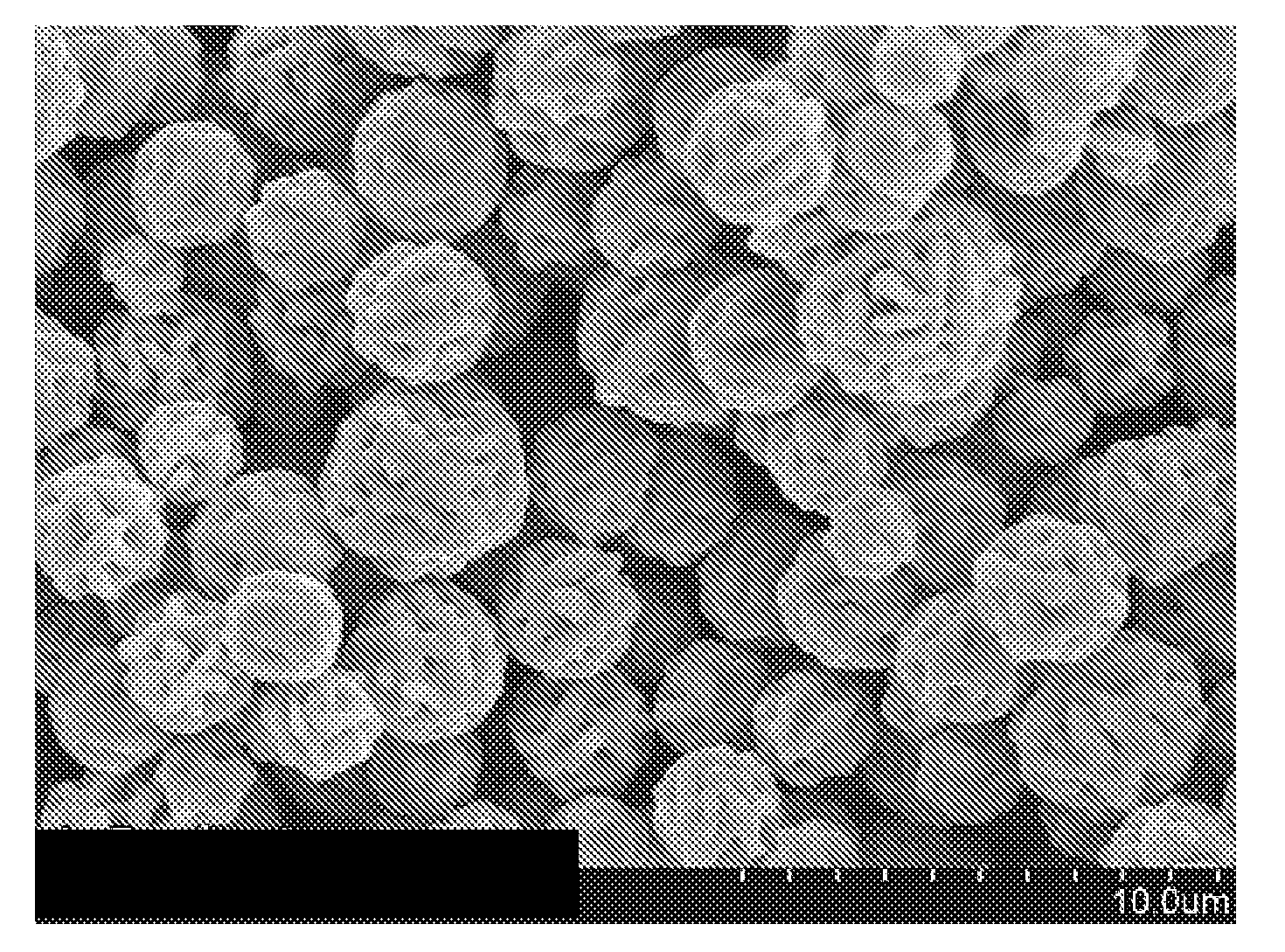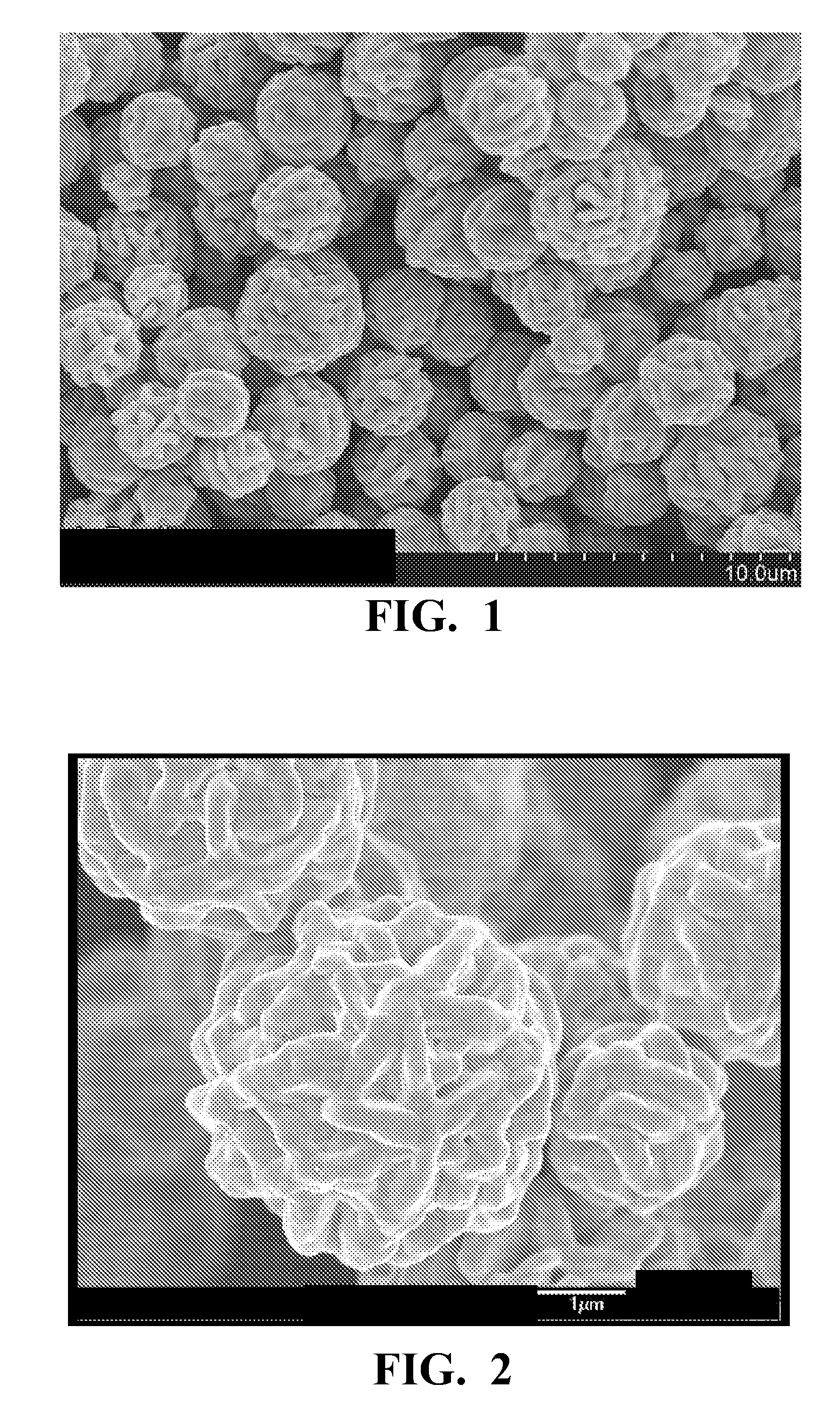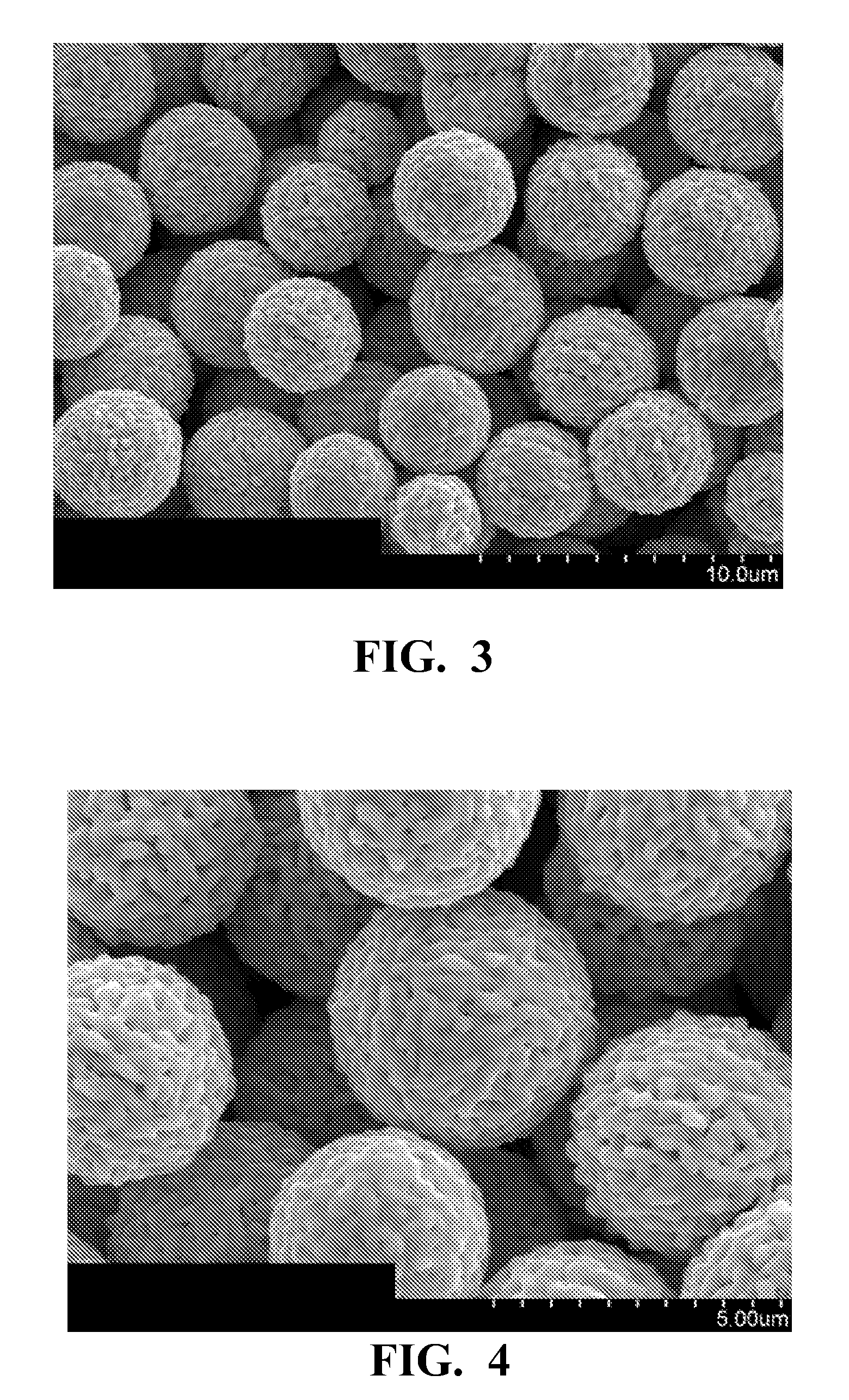Silver particles and processes for making them
- Summary
- Abstract
- Description
- Claims
- Application Information
AI Technical Summary
Benefits of technology
Problems solved by technology
Method used
Image
Examples
example 1
[0046]The acidic aqueous comprising a water soluble silver salt solution was prepared by dissolving 80 g of silver nitrate in 250 g of deionized water. This solution was kept at 50° C. while continuously stirring.
[0047]The acidic reducing and surface morphology modifier solution was prepared by adding and dissolving 45 g of ascorbic acid to 750 g of deionized water in a separate container from the silver nitrate solution. This solution was kept at 50° C. while continuously stirring. 20 g of nitric acid was then added to the solution followed by the addition of 5 g of sodium citrate and 0.5 g of polyethylene glycol.
[0048]After both solutions were prepared, the acidic aqueous silver nitrate solution was added to the acidic reducing and surface morphology modifier solution without any additional agitation or stirring in less than 5 seconds to make a reaction mixture that was maintained at 50° C. After five minutes, the reaction mixture was stirred for 3 minutes.
[0049]The reaction mixtu...
example 2
[0051]Example 2 was made using the process described in Example 1 except that 10 g of sodium citrate was added to the acidic reducing and surface morphology modifier solution instead of 5 g. A scanning electron microscope image showed particles with structure similar to that shown in FIGS. 3 and 4. The d10, d50, and d90 were 2.4 μm, 3.3 μm and 5.1 μm, respectively. The use of the larger amount of sodium citrate results in lower d50.
example 3
[0052]Example 3 was made using the process described in Example 1 except that no polyethylene glycol was added the acidic reducing and surface morphology modifier solution, 10 g of sodium citrate was added to the acidic reducing and surface morphology modifier solution instead of 5 g and the acidic aqueous silver salt solution, the acidic reducing and surface morphology modifier solution and the reaction mixture were kept at 25° C. instead of 50° C. A scanning electron microscope image showed particles with structure similar to that shown in FIGS. 3 and 4, but much smaller in size. The d10, d50, and d90 were 0.9 μm, 2.6 μm and 7.1 μm, respectively.
PUM
| Property | Measurement | Unit |
|---|---|---|
| Temperature | aaaaa | aaaaa |
| Temperature | aaaaa | aaaaa |
| Time | aaaaa | aaaaa |
Abstract
Description
Claims
Application Information
 Login to View More
Login to View More - R&D
- Intellectual Property
- Life Sciences
- Materials
- Tech Scout
- Unparalleled Data Quality
- Higher Quality Content
- 60% Fewer Hallucinations
Browse by: Latest US Patents, China's latest patents, Technical Efficacy Thesaurus, Application Domain, Technology Topic, Popular Technical Reports.
© 2025 PatSnap. All rights reserved.Legal|Privacy policy|Modern Slavery Act Transparency Statement|Sitemap|About US| Contact US: help@patsnap.com



